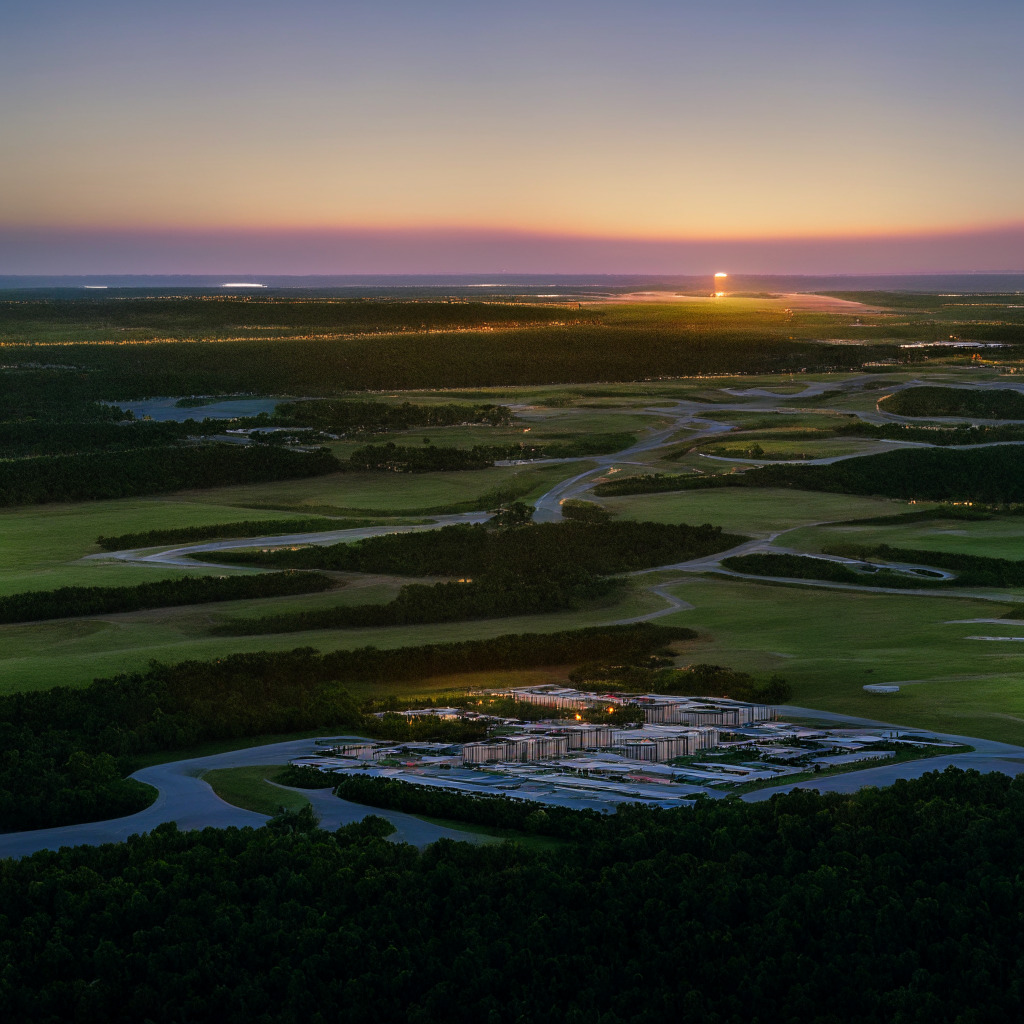“Bitcoin Minetrix has emerged as a potential game-changer in the field of tokenized Bitcoin cloud mining. Their Stake-to-Mine paradigm offers users the opportunity to mine Bitcoin by staking tokens, resulting in a redistribution of mining profits from corporates to retail investors. This approach provides a high yield return, offering both access and inclusivity to the Bitcoin mining process.”
Search Results for: Bitcoin mining
Celsius Network’s Rocky Road to Redemption: From Bankruptcy to Bitcoin Mining
Bankrupt cryptocurrency lender Celsius Network aims to return customers’ funds by year-end and transform into a Bitcoin mining venture, NewCo. Despite hurdles, the $450 million restructuring plan proposes repayment using Bitcoin and Ethereum and stock in the new company. The future of these ambitious plans remains uncertain.
Canadian Bitcoin Mining Firm Soars: Prospects, Profits, and Challenges Ahead
A Canadian Bitcoin mining firm records a surge in productivity, increasing its holdings to 703 BTC, worth approximately $20 million. While the firm encountered challenges like increased network difficulties and unfavorable regulations, it managed to maintain a strong performance, with plans for continual growth amidst the upcoming BTC halving event.
Unraveling Bitcoin Mining: Environmental Hazard or Green Energy Catalyst?
“Fascinating revelations suggest that Bitcoin mining now leads as the most sustainably-powered global industry, with over half of its energy from renewable sources. Despite criticism, research shows a 38% increase in sustainable energy adoption, surpassing other sectors, including banking.”
Navigating the Future of Bitcoin Mining: Sustainable Practices and Next-Gen Technology
“The future of Bitcoin mining focused on sustainable development and increased efficiency at the World Digital Mining Summit. The new Antminer S21 and S21 Hydro ASIC miners were unveiled, showcasing impressive performance. As Bitcoin mining becomes more challenging, the industry is shifting towards efficiency and renewable energy sources. Despite Bitmain’s complicated history, the S21’s impact depends on its reliability, availability, and pricing.”
Can Bitcoin Mining actually aid in Reducing Global Carbon Emissions?
The Institute of Risk Management (IRM) study suggests Bitcoin mining could contribute to reducing global carbon emissions by potentially reducing up to 8% of global carbon emissions by 2030, countering traditional narratives about Bitcoin’s negative environmental impact. However, the expanding energy-intensive crypto mining industry also highlights the balance needed between ecological preservation and technological progression.
Bitcoin Mining Bug Epidemic: Paxos’ Hefty Half-Million-Dollar Lesson and the Industry Response
In the complex world of Bitcoin mining, Paxos, a significant crypto exchange, paid an enormous transaction fee due to a coding bug. The incident has stirred discussions on the correct course of action, highlighting the importance of careful coding and attentive fee management in the evolving cryptocurrency network.
Exploring the Political Spectrum: The Rising Influence of Bitcoin Mining and Cryptocurrencies
Senator Ted Cruz endorses Bitcoin, highlighting its potential in bolstering energy grid resilience—an advantage in emergencies, such as the recent Texas extreme weather. The stance reflects the growing influence of digital currencies, despite potential hurdles and economic turbulence.
Navigating the Bitcoin Mining Reward Halving 2024: A Bullish Trigger or a Bearish Prelude
The global cryptocurrency market is watching Bitcoin’s (BTC) fourth mining reward halving in April 2024 as a potential game changer. The event, which halves the rate of supply expansion, has traditionally led to significant price increases post-halving. However, Bitcoin’s success is also influenced by macro factors like fiat liquidity conditions. Despite current positive trends, the worldwide M2 money supply growth rate is below the critical 6% threshold, leading some to question Bitcoin’s potential performance post-2024 halving.
Riot Platforms’ Energy Saver Strategy: A Game Changer in Bitcoin Mining Operations
Riot Platforms, a well-known Bitcoin mining company, saved roughly $31 million in August through a novel energy strategy. This strategy not only reduces Riot’s Bitcoin mining costs but also reinforces its position as a low-cost leader within the industry. Its efficient miner fleet and robust financial standing make it a major contender in Bitcoin’s anticipated ‘halving’ event next year.
The Micro Revolution in Bitcoin Mining: Pocket-Sized Devices Against Industry Secrecy
Micro Bitcoin mining devices are small, cost-effective tools that aim to defy the secrecy and exclusivity associated with Bitcoin mining. Bitmaker’s devices, costing around $3, offer accessibility and transparency, fostering understanding and community participation in cryptocurrency despite limited profitability. These innovations symbolize a step towards democratization and decentralization in the crypto world.
Debunking the Myth: The Real Energy Consumption of Bitcoin Mining
“The Bitcoin Electricity Consumption Index (CBECI) has significantly adjusted its original estimates of cryptocurrency’s energy appetite. It now suggests Bitcoin network’s total energy consumption is more comparable to US tumble dryers usage. This shift is due to the realization that older mining machines are being decommissioned quicker than predicted.”
Bitcoin Mining: A Hidden Champion in Green Energy Revolution or Grid Nightmare?
Bitcoin miners, against popular belief, are actually evolving to become beneficial players in grid optimization and the ongoing green transition. They leverage underutilized renewable energy sources, partake in grid-flexibilization initiatives and provide a unique capability for swift power usage adjustments. They suggest new strategies for energy-intensive industries to navigate the renewable energy landscape.
Unleashing Bitcoin Mining: The Untapped Catalyst for America’s Green Energy Transformation
“Bitcoin mining could potentially revolutionize America’s energy landscape by generating green, efficient, renewable, zero-emission energy sources. It makes unprofitable ventures profitable, enhances our energy grid’s efficiency, helps manage load, and contributes to a sustainable energy-conscious culture.”
Iris Energy’s $10M Nvidia GPU Investment: Advancing Bitcoin Mining & AI or Overburdening Power Resources?
Iris Energy acquires 248 state-of-the-art Nvidia GPUs worth $10 million, aiming to explore the domain of generative AI and Bitcoin mining. The company, already operational in renewable-rich locations, faces competition from Genesis Digital Assets Limited and sustainability concerns. Critics fear overburdening power resources and possible future bubble bursts.
Canaan’s Financial Rollercoaster: Soaring Bitcoin Mining Revenues Offset by Expanding Losses
“Canaan, a Bitcoin mining giant, reports a remarkable 43% rise in 2Q revenue, fueled by a revived Bitcoin market. However, net losses also escalated by 31% to $110 million, highlighting the unpredictability of the crypto industry.”
Unmasking Mystery: Unraveling the Intrigue Surrounding Tether’s Cryptic Bitcoin Mining Operations
Tether’s CTO, Paolo Ardoino, recently sparked interest about the company’s mysterious Bitcoin mining operation, located in Latin America. Despite offering some details, skepticism around the mining site’s exact location and legitimacy has roused due to Ardoino’s hesitant transparency. This brings into focus the crucial balance between physical security and the crypto community’s need for transparency, shaping the future of Blockchain applications.
Hydro-Powered Bitcoin Mining: Pioneering the Green Crypto Future or Exacerbating Energy Woes?
Bitcoin mining is moving towards renewable energy, with Genesis Digital Assets Limited opening a hydroeletricity-powered data center in Sweden. This reflects a trend, proving that Bitcoin mining and clean, renewable energy can coexist, which potentially addresses the industry’s environmental concerns.
The Global Disparity in Bitcoin Mining Costs: An Eye-Opener or Misleading Data?
“The disparities in Bitcoin production cost globally are due to varying electricity costs. Mining a single Bitcoin in Italy could cost $208,500, whereas in Lebanon it’s 783 times cheaper. However, only 65 countries are profitable for solo Bitcoin miners considering domestic electricity rates.”
Unveiling Moria: The Stakes of Analytical Tools in Bitcoin Mining’s Future
Tether’s CTO, Paolo Ardoino, highlights the need for improved analytical tools in Bitcoin mining. The potential software, named “Moria” aims to use data analytics to enhance mining operations, with a particular focus on harnessing renewable energy. However, the role of such advanced analytics could lead to complex challenges, balancing superior efficiency and increased complexity in Bitcoin mining.
Futurama’s Satirical Take on Bitcoin Mining: Farce or Harsh Reality?
“Futurama’s satire takes a comedic look at Bitcoin mining in the future, highlighting issues such as excessive electricity consumption and price volatility. This increased focus on cryptocurrency themes in entertainment underscores digital currencies’ growing relevance in our everyday lives.”
Harnessing Green Solutions: How Bitcoin Mining Could Drive Us Towards A Carbon-Neutral Future
“Bitcoin mining’s energy consumption has raised environmental concerns. However, recent innovations like flare gas solutions and nuclear energy are promising enhancements. Harnessing flare gas, an underused resource, for mining operations could drive a carbon-neutral era. Further potential lies in microgrids and nuclear power, despite safety and regulatory concerns. All these seek to incentivize blockchain use beyond Bitcoin mining, significantly reducing the industry’s carbon footprint.”
Bitcoin Mining: Futuristic Boom or Looming Risk? A Deep Dive into the State of BTC Production
“Bitcoin miners are increasing their mining power, with 16 key public companies controlling 16% of all BTC mined. However, the industry is unbalanced, favouring large miners with low production costs. The anticipated BTC halving in 2024 may further impair miner profitability. However, exchange-traded-fund approvals and institutional involvement could potentially improve conditions.”
The Rise and Fall of Bitcoin Mining Titans: Marathon Triumphs as Core Scientific Stumbles
“Marathon Digital Holdings has become the world’s lead bitcoin miner, surpassing Core Scientific with its self-mining hashrate or computational power. Despite setbacks, Marathon’s rapid adaptability and growth has resulted in nearly tripling its operational hashrate and a 360% stock price surge in 2023.”
Bitcoin Mining Giants Take the Green Leap: Genesis Digital Assets Expands in South Carolina
Genesis Digital Assets (GDA) inaugurated three eco-friendly data centers in South Carolina, contributing to over 2% of the total Bitcoin network hash rate. These expansions notably utilize local energy resources, strengthen local energy grids, and align with GDA’s clean energy ethos, potentially leading crypto mining towards a more sustainable, eco-friendly future.
Unraveling Russia’s Bitcoin Mining Boom: Economic Incentives and Geopolitical Pressures
Despite international sanctions following Russia’s invasion of Ukraine, the country’s bitcoin mining industry is booming due to low-cost energy and a cold climate. However, businesses operating there face risks including prohibited associations with sanctioned entities and potential reputational damage. Interestingly, this doesn’t discourage foreign companies; Russia’s economic advantages and Ordinals project-enhanced blockchain activity keep improving the country’s mining conditions.
Shaping the Future of Renewable Energy: The Unforeseen Role of Bitcoin Mining
“Bitcoin mining appears as an unexpected solution to the ‘duck curve’ – mismatch of peak energy demand and production times. By absorbing excess energy during high production periods, Bitcoin miners help balance grid management, enhancing profitability of renewable infrastructure and contributing to a sustainable future.”
Bitcoin Mining Rig Market Value Crisis: Adaptation or Extinction?
Bitcoin mining rigs are witnessing a significant decrease in market value due to lower profitability and higher energy costs. Next-gen rigs like Bitmain’s S19 XP and WhatsMiner M50S saw a 66% price drop. However, these falling prices may benefit miners preparing for the upcoming Bitcoin halving in 2024, potentially spurring a shift towards more efficient machines.
Decoding the Environmental Paradox of Bitcoin Mining: Unexpected Green Revolution
“Bitcoin miners solidify energy grids’ resistance, promote renewable energy, and respond with precision to grid frequency situations. They provide benefits like utilizing stranded energy during low demand periods and actively supporting renewable energy infrastructure investment. This promotes a greener energy mix and mitigates inefficiencies.”
Navigating the Bitcoin Mining Labyrinth: Texas’ Struggle between Economy and Ecology
“Texas, a significant bitcoin mining hub, is experimenting with integrating mining into power grids. However, this move has been criticized for potentially prioritizing an environmentally harmful industry over local communities. On the other hand, supporters highlight the potential grid benefits and job opportunities, but concerns about sustainability and water usage persist.”
Harnessing the Duck Curve: The Rise of Bitcoin Mining in Texas and its Implications
“In their strategy to attract Bitcoin miners, Texas utilizes a unique “duck curve” model illustrating energy supply and demand fluctuations. Texas’s adaptive system allows the price of energy to “float” throughout the day, creating a favourable environment for Bitcoin miners with an abundance of cheap renewable energy. However, regulatory and environmental concerns pose a challenge.”
Navigating Rough Seas: The Dynamics, Challenges and Future of Bitcoin Mining in a Bear Market
“Bitcoin miners experienced a $184 million windfall from transaction fees in Q2 2023 following a flat 2022. Top public mining companies saw their market cap increase by 257% since early 2023. However, miners are also liquidating Bitcoins to cover operational costs, due to scarcity of external capital and an ongoing bear market.”































